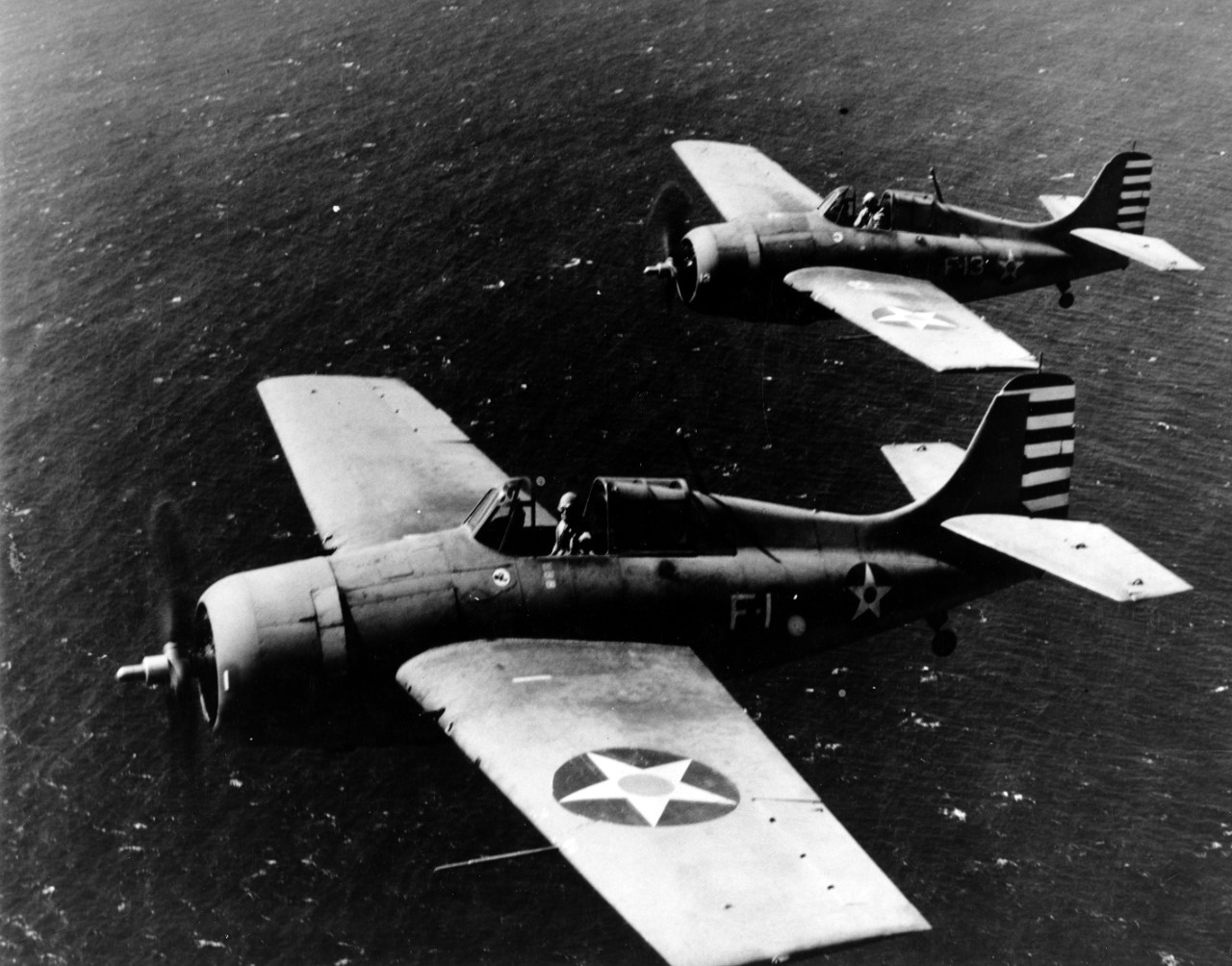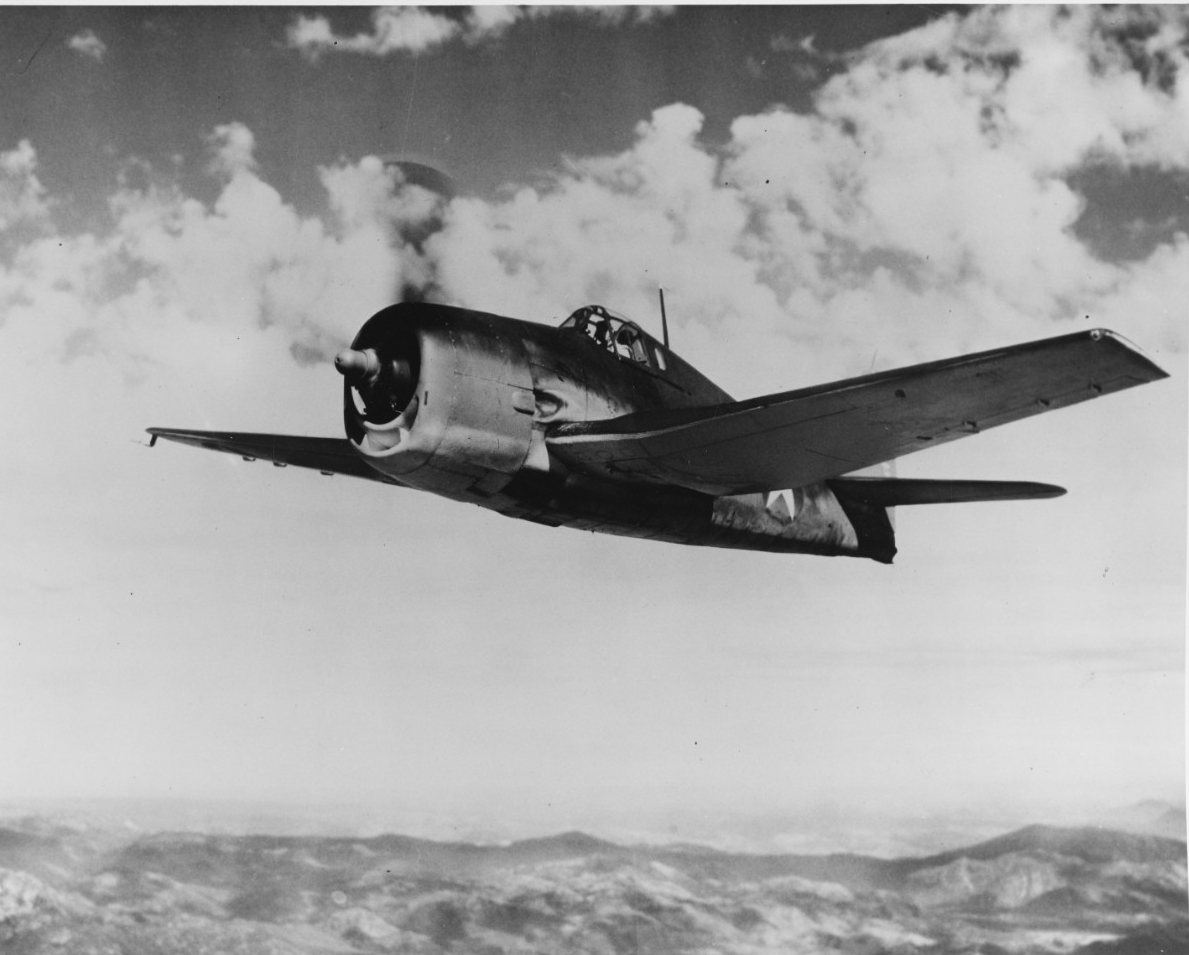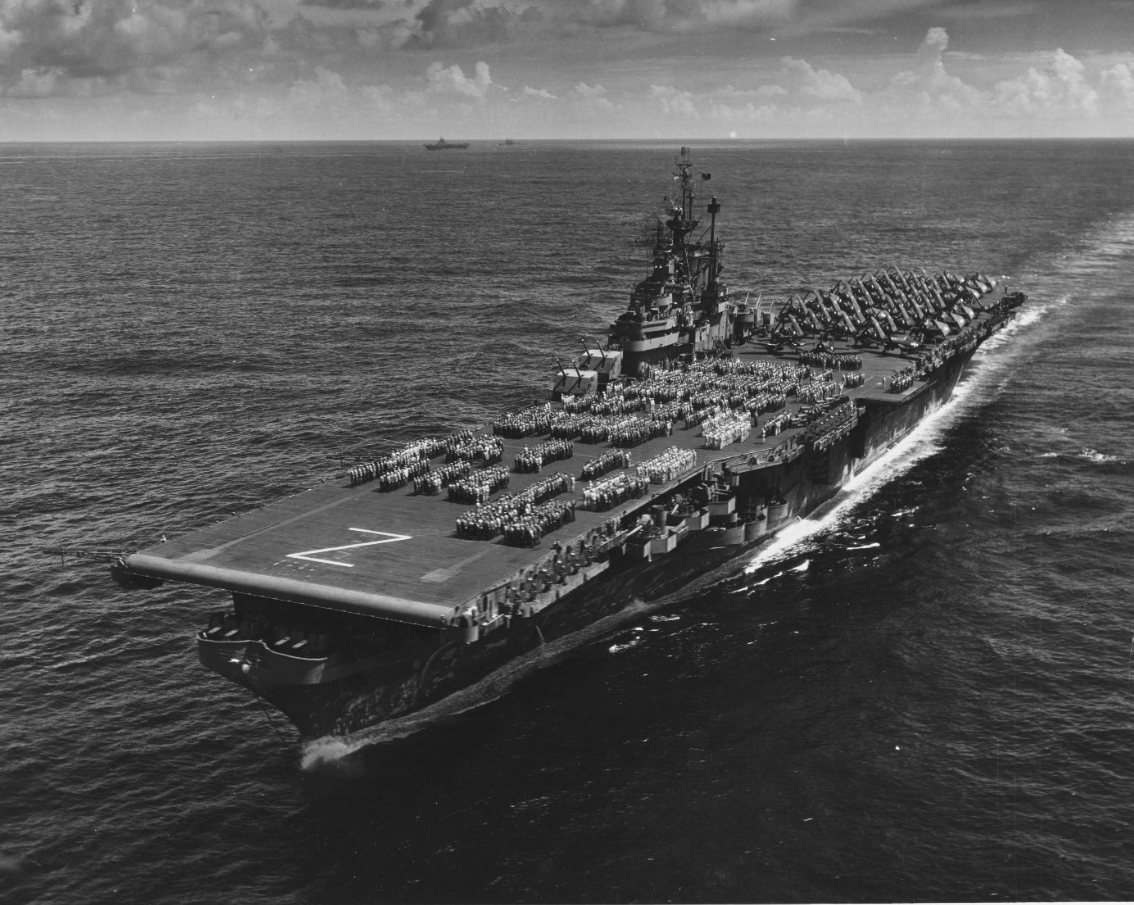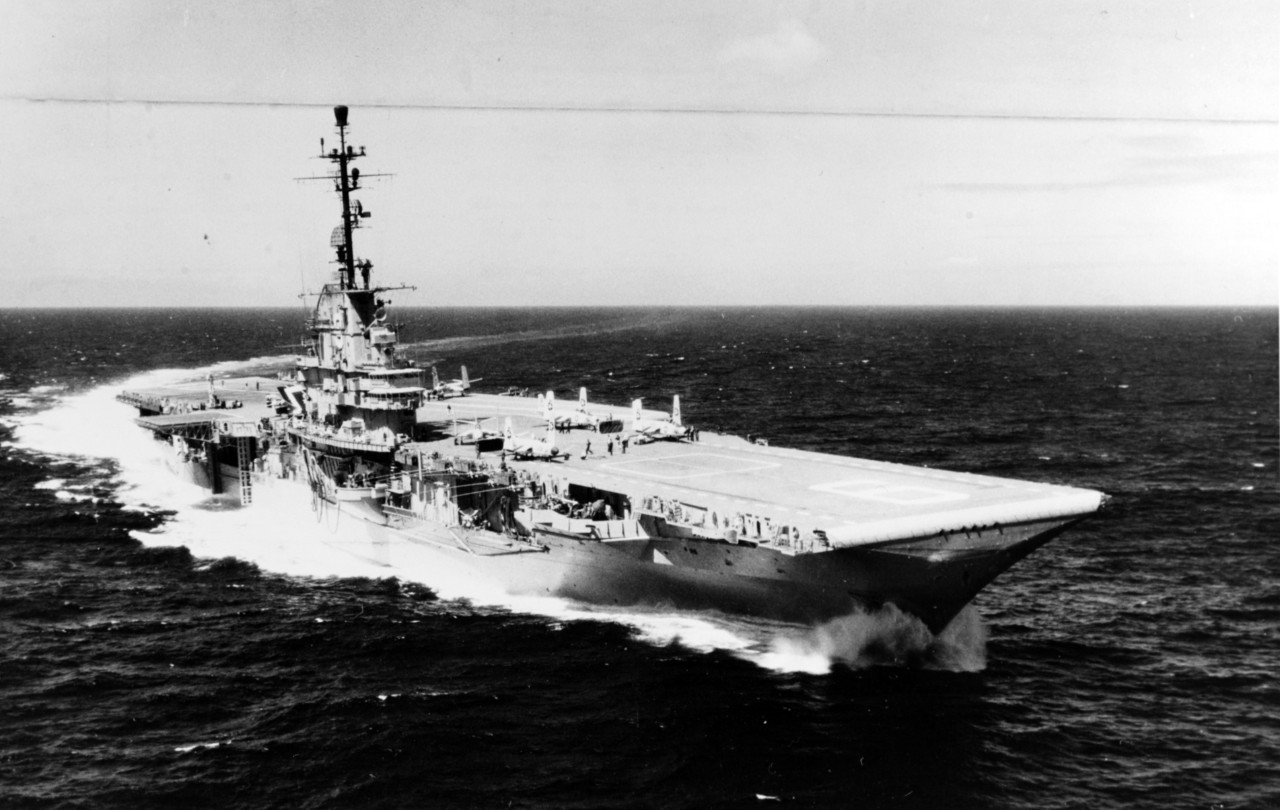Fair Winds RADM Edward Lewis “Whitey” Feightner
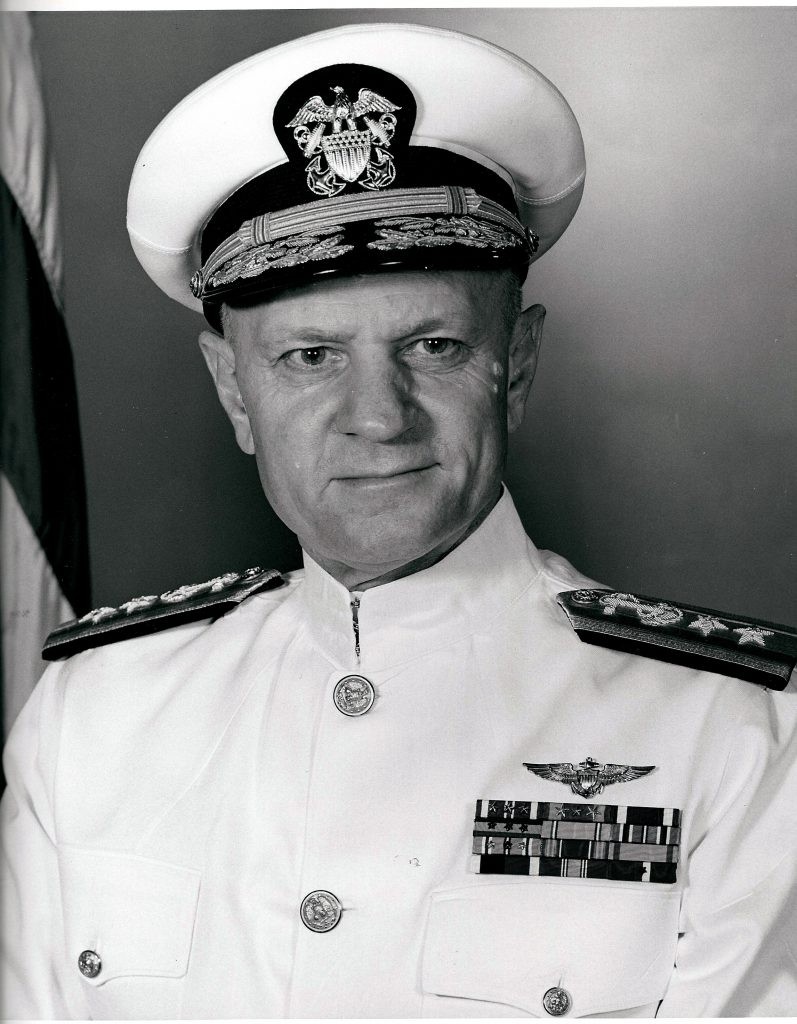
Fair Winds RADM Edward Lewis “Whitey” Feightner
By Samuel J. Cox Rear Adm., USN (retired) Director of Naval History, Curator for the Navy Director, Naval History and Heritage Command
It is with deep regret I inform you of the passing of Rear Admiral Edward Lewis “Whitey” Feightner on April 1, 2020, at age 100. Feightner enlisted in the Navy’s Aviation Cadet program in June 1941 and served until his retirement in 1974 as Assistant Commander for Logistics and Flight Support Group Naval Air Systems Command (Air-04). His callsign, “Whitey,” was bestowed by the legendary Lieutenant Commander “Butch” O’Hare, and Feightner went on to become an ace in his own right, shooting down nine Japanese aircraft while flying F4F Wildcats and F6F Hellcats, earning four Distinguished Flying Crosses on ships that earned three Presidential Unit Citations. His post-war career was filled with Naval Aviation “firsts” as a test pilot, Blue Angel, and squadron and air group command. His achievements in the Pentagon bureaucracy were legion, including playing a pivotal role in the development of the F-14 Tomcat fighter, and many other aircraft and weapons systems.
Feightner graduated from Findley College in 1941. Believing that war was coming, he enlisted in the Navy V-5 Aviation Cadet Program, commencing initial flight student training in June 1941 at Grosse Isle, Michigan. In July 1941, he commenced flight training at NAS Corpus Christi, Texas, making his first trap on the carrier Saratoga (CV-3) and earning his wings and commission on April 3, 1942. He received orders to report to Fighter Squadron Five (VF-5) on Yorktown (CV-5) but Yorktown was sunk at the Battle of Midway before he arrived. Qualifying in the F4F Wildcat fighter, he was then stashed with VF-3, then commanded by LCDR Edward “Butch” O’Hare, who gave Ensign Feightner the nickname “Whitey” because of his propensity to burn rather than tan in the Hawaiian sun.
In October 1942, Feightner reported to VF-10 “Grim Reapers,” commanded by Commander Jimmy Flatley, embarked on carrier Enterprise (CV-6), which had just completed repairs from bomb damage in the Battle of the Eastern Solomons. Enterprise arrived in the Guadalcanal area just in time to participate in the Battle of Santa Cruz on October 26, 1942, where on Feightner’s first combat mission he shot down a Val dive-bomber that was making a run on the carrier Hornet (CV-8). Hornet was sunk in the battle, and Feightner recovered on the badly damaged Enterprise. While Enterprise was being repaired, Feightner flew from Henderson Field on Guadalcanal during the intense fighting around the island in November 1942. Flying once again from Enterprise in January 1943, during the Battle of Rennell Island, Feightner shot down three G4M Betty twin-engine torpedo bombers that were making a run at the already severely damaged heavy cruiser Chicago (CA-29), which was lost despite Feightner’s heroics, which earned his first Distinguished Flying Cross.
In May 1943, Feightner transitioned to the F6F Hellcat fighter, reporting to newly established VF-8 “Hellcats,” initially assigned to carrier Intrepid (CV-11), and Feightner made the first catapult launch and arrested recovery on Intrepid. However, due to engineering issues with Intrepid, VF-8 cross-decked and deployed to the Pacific on new carrier Bunker Hill (CV-17). On March 30, 1944, Feightner shot down an A6M “Zero” fighter during a raid on Peleliu, and on April 29, 1944, he shot down another Zero during a raid on Truk. In June 1944, while flying a photo reconnaissance mission over Tinian and Saipan, Feightner’s plane was badly shot up, recovering on the carrier with 170 holes. On October 12, 1944, during the major carrier raid on Formosa, Feightner shot down three Zeroes. During the war, he had nine kills and four “probables,” earning four Distinguished Flying Crosses.
Withdrawn from front-line combat in December 1944, Feightner was sent to NAS Los Alamitos, California as a fighter instructor pilot with VF-98, during which time he was selected to be the first Navy pilot to fly a jet, the Lockheed P-80, under the tutelage of Marine Major Richard Bong (the all-time leading U.S. ace, with 40 kills) who unfortunately was killed in a crash of the P-80 on the day the first atomic bomb was dropped. In August 1945, Feightner continued as an instructor pilot at NAS San Diego, with VF-21.
In October 1946, Feightner was assigned as Flag Lieutenant and Aide for Commander, Carrier Division Three, embarked on carrier Shangri-La (CV-38) for a Western Pacific deployment including crisis response during the fall of Nationalist China to the Communists. He was also embarked on Antietam (CV-36). He then became Flag Lieutenant and Aide to Commander, Carrier Division Two for several months, embarked on Princeton (CV-37) and Tarawa (CV-40).
In October 1948, Feightner entered Navy Test Pilot School in Class 2 at NAS Patuxent River, and from June 1949 to January 1952 flew as a test pilot for numerous aircraft ranging from helicopters to the giant R60 heavy transport and including numerous jets such as the F7U-1 Cutlass, F2H Banshee, F9F Cougar, plus the propeller-driven AD Skyraider. Feightner was the only pilot to launch and recover an F7U-1 on a carrier, as the plane proved underpowered, and in 1951 he made a hard landing on Midway (CV-41) which cracked the fuselage of the F7U-1. During this period, 19 test pilots and crewmen were killed in accidents.
In January 1952, Feightner was assigned to the newly-formed Blue Angles flight demonstration team as the lead solo pilot, flying the F7U-1 Cutlass (apparently selected due to its “futuristic” look, until it was deemed unsuitable). In July 1952, Feightner returned to Patuxent River to continue test pilot duties. In September 1952, he assumed duties as a Project Pilot, for Air Development Squadron Three (VX-3,) at NAS Atlantic City.
In January 1955 and promoted to commander, Feightner assumed command of VF-11 “Red Rippers,” flying the F2H-3/4 Banshee, embarked on Coral Sea (CVA-42,) deploying to the Mediterranean, including U.S. Navy response to the 1956 Suez Crisis. VF-11 also worked on developing the Banshee’s nuclear strike mission capability. In March 1957, Feightner was assigned as the Commanding Officer of the Jet Transition and Training Unit at NAS Olathe, Kansas, working primarily with the A3D Skywarrior “Whale.” In October 1950, he assumed command of Carrier Air Group Ten, initially assigned to Forrestal (CVA-59) but ultimately deployed to the Mediterranean on Essex (CVA-9), flying the unsuccessful F4D Skyray, along with other aircraft. This was followed in February 1960 by a short tour as Standardization Officer for Carrier Replacement Air Group Four, which included the first introduction of NATOPS (Naval Air Training and Operating Procedures Standardization). Feightner then spent a year as a student at the U.S. Naval War College.
In July 1961, Feightner reported to the Bureau of Weapons in Washington D.C. as Fighter Design Officer, with lead on the F4H-1 (later re-designated F-4B Phantom II) project, where he pushed the Navy’s opposition to the TFX, a project pushed by Secretary of Defense McNamara for a common Air Force and Navy fighter aircraft (it was too heavy for carrier operations, among other things), the Navy’s opposition contributed to CNO George Anderson’s forced early retirement. Despite this, Feightner was promoted to captain in May 1962.
In July 1963, Feightner reported as Staff Operations Officer, Commander Carrier Division Two, embarked on USS Enterprise (CVA(N)-65) for Operation Sea Orbit, the first around-the-world unrefueled deployment by an all-nuclear powered task force in April to October 1964. Feightner then assumed his deep-draft command on the oiler Chikaskia (AO-54) for a Mediterranean deployment. Although initially promised command of Forrestal, Feightner instead was put in command of the assault helicopter carrier Okinawa (LPH-3,) when it was decided that the LPHs were “aviation” ships that needed to be commanded by aviators and not surface officers. Feightner prepared Okinawa for a Vietnam deployment but was ordered to Washington D.C. before she departed.
Following a brief assignment as a student at the Defense Weapons System Management Center, in July 1967 he reported as Branch Head (CNO OP-506) and then Navy Fighter Study Project Officer in OP-506, followed in October 1968 as Director, Air Weapons Analysis (CNO OP-05W) and Director, Southeast Asia Analysis Group, (CNO OP-03Z), which led to the creation of “Top Gun” and numerous weapons systems and aircraft improvements. In October 1969, Feightner became Deputy Director, Aviation Plans and Requirements Division (OP-50B). Among numerous contentious issues during this period was the Navy’s final abandonment of the TFX project, which in the Air Force evolved into the F-111 and in the Navy to the F-14 Tomcat, but through Feightner’s work, the TFX’s AWG-9 radar and AIM-54 Phoenix air-to-air missile system program was rolled into the F-14. The Navy Air Wings of the late 1970s, 1980s and into the 1990s were the product of the work during this period.
In September 1970, Feightner was assigned as Assistant Commander for Logistics and Flight Support Group at the Naval Air Systems Command (Air-04, and then Air-01) where he was promoted to Rear Admiral on February 1, 1971 and continued his support to Naval Aviation until his retirement on June 30, 1974.
Rear Admiral Feightner’s awards include the Legion of Merit (2), Distinguished Flying Cross (4), Air Medal (12), Navy and Marine Corps Medal, Combat Action Ribbon, Presidential Unit Citation (3), China Service Medal, American Defense Service Medal, American Campaign Medal, Asiatic-Pacific Campaign Medal (with 11 campaign stars), World War II Victory Medal, National Defense Service Medal (2), and Philippine Liberation Medal.
Following retirement from active duty, he joined with several retired flag officers in forming FMS (Federal Management Systems) consulting for the Navy, and also serving as a company representative for United Technologies. He was active in various clubs, including Golden Eagles and Old Bold Pilots.
Funeral services will be at Arlington National Cemetery at a date to be determined.
During his extraordinary career, Rear Admiral Feightner flew over 100 types of aircraft, amassing 836 fixed-wing traps and 38 Helicopter landings on ships with 4,100 hours in jets, 4,500 hours in props, 210 hours in helicopters, and almost 2,400 hours in civilian aircraft (flying his last flight on his 97th Birthday) without ever crashing, although he had many close calls. Described as “kind and gracious to the end,” he possessed both a pleasant nature and confident leadership, and nerves of steel. He flew in the extremely tough combat environment of Pacific Carrier battles and then flew as a test pilot during the very dangerous early days of Navy jet aviation, driving the implementation of such things as NATOPS and Top Gun, making Naval Aviation both more effective and safe. His impact on Naval Aviation as we know it today was truly profound, and his legacy is very much alive today and will be for a long time to come. This man was a true hero.
Rest in Peace Admiral Feightner.

